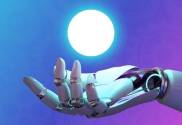
Machine Learning’s Impact on Future Job Markets
The development and implementation of machine learning solutions in technology are not as straightforward as they may appear from the outside.
Machine learning is revolutionizing diverse sectors, particularly employment and job markets, enhancing efficiency from entry-level roles to top-tier positions.
This advanced tool enables automated, intelligent decision-making, streamlines work processes, and fundamentally alters how we define and perform jobs. The impact of machine learning on our professional landscape is profound and far-reaching.
Understanding the Basics of Machine Learning
Machine learning (ML) is a type of artificial intelligence (AI) that allows systems to learn from data, make decisions, and improve over time without explicit programming. The magic lies in algorithms that find patterns and generate insights, making the system smarter with each data interaction.
ML generally falls into three categories:
- Supervised Learning: This involves teaching the system using data that are already labeled with the correct answer. The algorithm then uses this knowledge to predict outcomes for new, unseen data.
- Unsupervised Learning: In Unsupervised Learning, the system receives unlabeled data. It independently finds patterns and relationships. This process helps reveal hidden insights.
- Reinforcement Learning: This involves an agent learning to make decisions by performing actions and receiving rewards or penalties, like a child learning to play a video game.
In our modern tech ecosystem, ML plays a significant role. From healthcare and finance to e-commerce and beyond, its applications are many and varied.
One such application can be found in a study where we analyzed over one million git commits. By employing AI, we were able to determine developers’ moods and sentiments based on their commit messages.
The ability of ML to process and learn from vast quantities of data has been a driving force behind its widespread adoption, establishing it as a central pillar in our increasingly data-driven world. We’ll delve deeper into its impact on job markets in the following sections.
How Machine Learning Is Currently Impacting Job Markets

Machine Learning (ML) is making waves in the job market, revolutionizing various roles, and creating new ones.
There’s a surge in jobs that directly utilize ML. Data Scientists and ML Engineers are in high demand, responsible for developing and implementing ML models to solve complex business problems. These professionals are crucial in industries ranging from healthcare and finance to e-commerce and marketing.
ML expertise has become a hot commodity, leading to a spike in related jobs. Positions like ML Specialist, ML Architect, and AI Product Manager appear on job boards more frequently. These roles need a strong ML understanding to develop and manage ML systems.
To understand this impact, let’s look at some case studies. Tech giants like Google and Amazon are using ML extensively. Google’s ML algorithms drive services like Google Search and Google Photos. Meanwhile, Amazon uses ML for recommendation systems, enhancing customer experience.
Beyond the tech sector, JPMorgan Chase employs ML to detect fraudulent transactions. In healthcare, companies like Zebra Medical Vision use ML for disease detection.
In essence, ML is already reshaping the job landscape, opening new career paths while enhancing existing ones.As we dive deeper into the AI era, this trend is likely to persist, perhaps even at a faster pace.
The Upskilling and Reskilling Imperative
In this age of rapid technological advancement, professionals must keep their skills current. With ML’s growing influence, upskilling or reskilling for ML-oriented roles is becoming a necessity. By gaining ML skills, professionals not only safeguard their employability but also position themselves for exciting new opportunities.
Upskilling refers to learning additional skills to excel in one’s current role, while reskilling is about acquiring new skills to transition into a different role or industry. Both are vital in today’s job market, especially given the surge in demand for ML expertise.
There are numerous resources available for learning ML. Online learning platforms, such as Coursera, Udemy, and edX, offer comprehensive ML courses. Many prestigious universities provide online degree programs in data science and AI. OpenAI and other organizations also publish rich educational content for self-learners.
Exploratory programming can be a hands-on way to learn ML skills. This approach involves learning by doing, where one writes code not to build a final product but to understand a problem better.
By embracing the upskilling and reskilling imperative, professionals can adapt to the evolving job landscape, turning the ML wave from a potential threat into an empowering opportunity.
The Dual Impact of ML: Job Creation and Job Displacement
Machine Learning (ML) creates a double-edged sword effect in the job market. On one side, it could lead to job displacement, while on the other, it’s expected to create new roles and fields.
Job displacement can occur as ML automates routine tasks. Jobs that involve repetitive duties or predictable patterns, like data entry, basic customer service, and simple manufacturing tasks, could be automated, potentially leading to job losses. This technological unemployment is a valid concern that shouldn’t be overlooked.
While some jobs may decrease, new ones are expected to arise. The implementation of ML in various sectors opens up opportunities for roles that didn’t exist before. Data scientists, ML engineers, AI ethicists, and automation specialists are in-demand roles today that were virtually unheard of a decade ago.
Furthermore, ML can enhance existing jobs, leading to upskilling. For instance, healthcare professionals using ML tools for better diagnostics, or marketers leveraging ML for personalized campaigns, enhances their roles and increases their value in the job market.
In essence, the future job market with ML will likely be a landscape of transformed roles, where new jobs will co-exist with improved traditional ones, and reskilling becomes a constant. The challenge and opportunity for us lie in navigating this shift effectively.
Conclusion
Machine Learning (ML) is transforming our world, presenting a blend of challenges and opportunities. In an ML-centric job market, humans must evolve, focusing on roles that supervise and understand ML.
Emphasizing continuous learning and upskilling is paramount for adapting to this AI-enriched future. Remember, ML implies not job elimination but job transformation. As we step into this dynamic, ML-driven era, we must hold tight to the mantra of keep learning, for it’s through knowledge and adaptability that we’ll thrive.
Featured Image Credit: Provided by the Author; Thank you!





